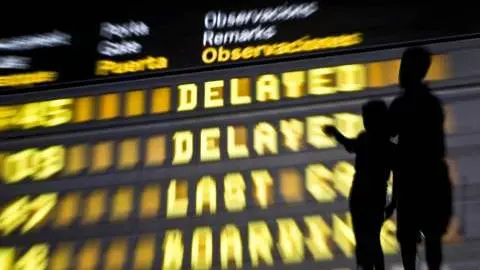The Omicron storm in our crystal ball
Not again. Financial markets showed a very human reaction to the Omicron variant, selling off assets as lockdown fears mounted. It's too early to come up with anything other than an amateur’s view on what happens next with Covid. But as we look at the most important trends for next year, it reminds us that the pandemic is far from over
Omicron could delay the 2022 global recovery
Just when we thought we were through the worst, along comes the Omicron variant. And that skews at least the short-term outlook for the global economy in 2022. ING's Carsten Brzeski looks at what it all could mean
It's a storm in our crystal ball. In our base-case scenario, we assume that Omicron will not be a game-changer and rather short-lived, at best motivating some European governments to tighten restrictions; something they'd been considering anyway in the current fourth wave of the pandemic. And even if parts of the world were to go into lockdown, the experience of 18 months of crisis shows economies can adapt. With every single lockdown, the adverse economic impact becomes weaker.
In a best-case scenario, Omicron could even speed up herd immunity, at least if it remains a contagious but very mild variant. Needless to say, we can all imagine how the worst-case scenario would look. Interestingly, major central banks seem to be ignoring this new uncertainty. Fed Chairman Jay Powell just retired the word ‘transitory’ when it comes to inflation, signalling a faster taper and consequently earlier rate hikes. I hope that ‘transitory’ ends up in the same retirement home as ‘holistic’, ‘upstream' and 'downstream’ or ‘multifaceted’. These are words from a central bankers’ dictionary no one really needs.
It was always a bit strange to call inflation ‘transitory’, transiting to where or for what reason? ‘Temporary’ would have been a better choice. With the Fed now fearing longer inflationary pressure and the ECB still being in ‘team transitory’, inflation will remain a big issue in 2022. In our view, inflation will come down but not as quickly as that team expects. It will take until the end of 2022 before inflation again approaches 3% in the US and 2% in the eurozone. We expect the global economy to gain momentum at the latest by the European spring. That means central banks will have very few options other than to taper and to start, or start thinking about hiking rates.
When it comes to fiscal policy, 2022 will have to prove that our hopes and expectations that governments will shift from emergency measures to public investment become a reality. There have been promising developments this year, not least with President Biden's infrastructure programme, Europe's recovery plan, the new German government's agenda and a realisation that the 'green' transition needs to be stepped up. The era of accommodative fiscal policies began some time ago; some even call it fiscal dominance.
Returning to our crystal ball in early December 2021, I have a strong déjà-vu feeling from last year when we were looking at a still fairly bleak future. But then I think that we know so much more about this virus and how governments, central banks and economies can quickly adapt. So, we're still optimistic. And we're sure that 2022 should be a year of further policy rotation as those central banks try to find the exit door from their emergency policies while governments shift from crisis stimulus to the green transition and structural improvements.
And perhaps our stormy crystal ball is simply one of those kitsch snow globes; shaking them creates a tempest. But every storm in every globe does every time find calm. Eventually.
Download
Download article
2 December 2021
ING global outlook 2022 This bundle contains 17 articlesThis publication has been prepared by ING solely for information purposes irrespective of a particular user's means, financial situation or investment objectives. The information does not constitute investment recommendation, and nor is it investment, legal or tax advice or an offer or solicitation to purchase or sell any financial instrument. Read more
